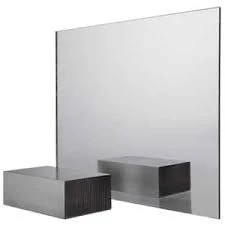

Understanding the Pricing of 4mm Float Glass
Float glass, ubiquitous in both commercial and residential applications, is a processed glass product known for its excellent optical clarity and smooth surface finish. Among the various thicknesses available in the market, 4mm float glass is a popular choice due to its versatility, cost-effectiveness, and aesthetic appeal. As a crucial component in construction, furniture, and automotive industries, understanding its pricing dynamics is essential for buyers and industry stakeholders alike.
What is Float Glass?
Float glass is produced by the float glass process, where molten glass is floated on top of molten tin to create a flat surface. This method results in glass that is uniformly thick, free of distortions, and has high purity. The smooth surface is ideal for a range of applications including windows, mirrors, and glass doors. The 4mm thickness strikes a balance between durability and light weight, making it suitable for many architectural and design applications.
Factors Influencing the Price of 4mm Float Glass
1. Raw Material Costs The primary materials used in float glass production include silica sand, soda ash, and limestone. Variations in the prices of these raw materials can significantly affect the overall cost of float glass. For instance, a spike in sand prices may lead to an increase in float glass prices.
2. Manufacturing Processes The float glass manufacturing process is energy-intensive, and fluctuations in energy prices can directly impact production costs. Factors such as labor costs, technology used in production, and environmental regulations also play a crucial role.
3. Market Demand and Supply The glass market operates on supply and demand dynamics. During construction booms, demand for float glass can surge, leading to higher prices. Conversely, in times of economic downturn or reduced construction activity, prices may stabilize or decrease.
4. Transportation and Logistics The final pricing of float glass is also influenced by transportation and logistics costs. Since these products are often heavy and fragile, shipping can be expensive and complicate the pricing structure.

5. Region-specific Factors Regional pricing can vary due to local demand, the presence of glass manufacturing plants, and geopolitical factors affecting trade. For instance, tariffs on imports or international trade agreements can influence prices across borders.
Current Market Trends
As of late 2023, the global float glass market shows varying trends influenced by economic recovery phases in different regions. Emerging markets in Asia, Africa, and Latin America are witnessing an increase in construction activity, resulting in higher demand for float glass, particularly the 4mm variety. Conversely, mature markets, while still stable, often experience price corrections and competitive pricing strategies to retain market share.
Additionally, sustainability is becoming a significant theme in the float glass industry. Manufacturers are investing in eco-friendly production technologies and recycling initiatives. These advancements can sometimes lead to higher costs initially, but they may also offer long-term savings and environmental benefits.
Pricing Comparison
Typically, the price of 4mm float glass can range widely depending on the factors mentioned above. For bulk purchases, prices may vary from $10 to $30 per square meter. However, these prices fluctuate regularly based on market conditions, and custom orders or specialized treatments (like tempered or laminated glass) can further escalate prices.
Conclusion
Understanding the pricing of 4mm float glass is essential for consumers, builders, and architects when planning projects. By recognizing the factors that influence pricing and staying attuned to market trends, stakeholders can make informed decisions. Moreover, as the industry moves towards sustainability, future pricing strategies may also reflect these environmental commitments. As the demand for versatile and durable materials like 4mm float glass continues to grow, staying updated with the latest market trends becomes increasingly important for anyone involved in construction and design.